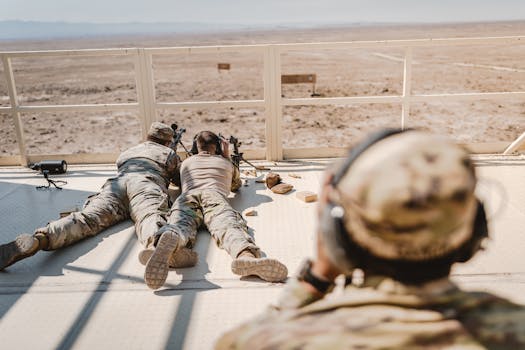
**
The United States has resumed some military aid shipments to Ukraine, marking a significant shift in the ongoing conflict. This decision, following a temporary pause for an audit of US military assistance, signals a renewed commitment to supporting Ukraine's defense against the Russian invasion. The move, however, is not a full resumption of all aid, leading to questions about the long-term strategy and the implications for the battlefield. This article delves into the specifics of the resumed deliveries, the reasons behind the initial pause, and the potential consequences for the war.
The Resumption of Arms Deliveries: What's Included?
The Pentagon announced the resumption of certain weapons deliveries to Ukraine, focusing primarily on ammunition and critical spare parts for existing weaponry. This carefully calibrated approach avoids the immediate delivery of highly sensitive or advanced weaponry, at least for now. The types of aid currently being resumed include:
- Artillery Ammunition: Resupplying Ukraine's dwindling stocks of artillery shells is crucial for maintaining their offensive capabilities. The ongoing heavy fighting necessitates a consistent flow of this vital ammunition.
- Spare Parts for Existing Systems: Maintaining operational readiness of existing Ukrainian weapons systems requires a constant supply of replacement parts. This is particularly critical given the intensity of the fighting and the heavy wear and tear on their equipment.
- Maintenance and Repair Support: The US is also providing technical support to help Ukraine maintain and repair its existing weapons systems, extending the lifespan of its operational arsenal.
This targeted approach allows the US to address Ukraine’s immediate needs without escalating the conflict further, a key consideration amidst rising global tensions. The administration emphasized a commitment to continuous assessment of Ukraine's needs and adjustment of aid accordingly.
What Weapons Are Not Being Delivered (Yet)?
While the resumption of aid is a welcome development for Ukraine, it’s crucial to note that not all weapons systems are being delivered at this time. The initial pause involved a broader review of aid effectiveness and accountability, and some weapons systems are likely still under review. This includes, but is not limited to:
- Advanced Fighter Jets: Deliveries of F-16s or other advanced fighter jets remain a subject of ongoing debate and logistical considerations.
- Long-Range Missiles: The provision of long-range missiles capable of striking deep into Russian territory remains a highly sensitive issue, potentially escalating the conflict.
- Specific High-Tech Weapons Systems: The specifics of any other weapons systems still awaiting approval haven't been publicly released, leaving room for speculation.
This selective approach underscores the careful balancing act the US is undertaking to support Ukraine without provoking a wider conflict with Russia.
The Initial Pause: Understanding the Audit and its Implications
The temporary pause in weapons deliveries stemmed from a comprehensive audit of the US military assistance to Ukraine, initiated to ensure accountability and transparency in the allocation and use of these crucial resources. This process aimed to:
- Track Weapon Usage: The audit sought to accurately track how US-provided weapons were being used on the battlefield and their effectiveness.
- Prevent Weapon Diversion: Concerns about the potential for weapons to fall into the wrong hands prompted rigorous tracking and monitoring mechanisms.
- Improve Aid Effectiveness: The audit was designed to identify areas for improvement in the delivery and allocation of aid to maximize its impact.
This internal review, while temporarily halting deliveries, ultimately aimed to improve the efficacy and transparency of the US aid program, enhancing both its impact and credibility. The findings of this audit, while not publicly released in detail, likely informed the decision to resume a more targeted approach to arms shipments.
Geopolitical Implications and Future of US Aid to Ukraine
The resumption of arms deliveries, albeit partial, carries significant geopolitical implications. It demonstrates continued US support for Ukraine's sovereignty and resistance against Russian aggression. However, it also signals a cautious approach, aiming to balance support for Ukraine with the need to prevent further escalation of the conflict.
The future trajectory of US aid will depend on a multitude of factors, including:
- The progress of the conflict on the ground: The intensity and direction of fighting will significantly influence the types and quantities of weapons delivered.
- Russia's response to the resumed aid: The Kremlin's reaction to the increased flow of arms to Ukraine could dictate the US’s future strategy.
- International political dynamics: The stances of other NATO allies and international actors will play a significant role in shaping US policy.
Ukraine Counteroffensive and Military Aid
The ongoing Ukrainian counteroffensive is a key factor influencing the nature and volume of US military aid. The success or failure of this offensive will directly impact the future needs of Ukraine's armed forces, and therefore, the types and amount of support provided by the US. The ongoing assessment of battlefield requirements and the need to adjust the strategy based on real-time conditions will be crucial in deciding on future aid packages.
This strategic balancing act—providing crucial support to Ukraine while mitigating risks of further escalation—will continue to define the US approach to the ongoing conflict. The long-term implications of this carefully managed resumption of arms deliveries remain to be seen, but it signifies a critical juncture in the ongoing war in Ukraine. The continued monitoring of the situation, and the evolving needs of the Ukrainian military will undoubtedly guide future decisions on military aid. The situation remains dynamic, and further developments will shape the narrative in the coming weeks and months.



















